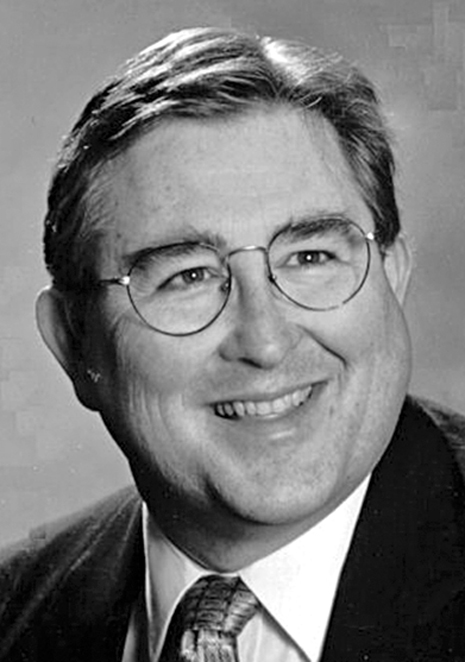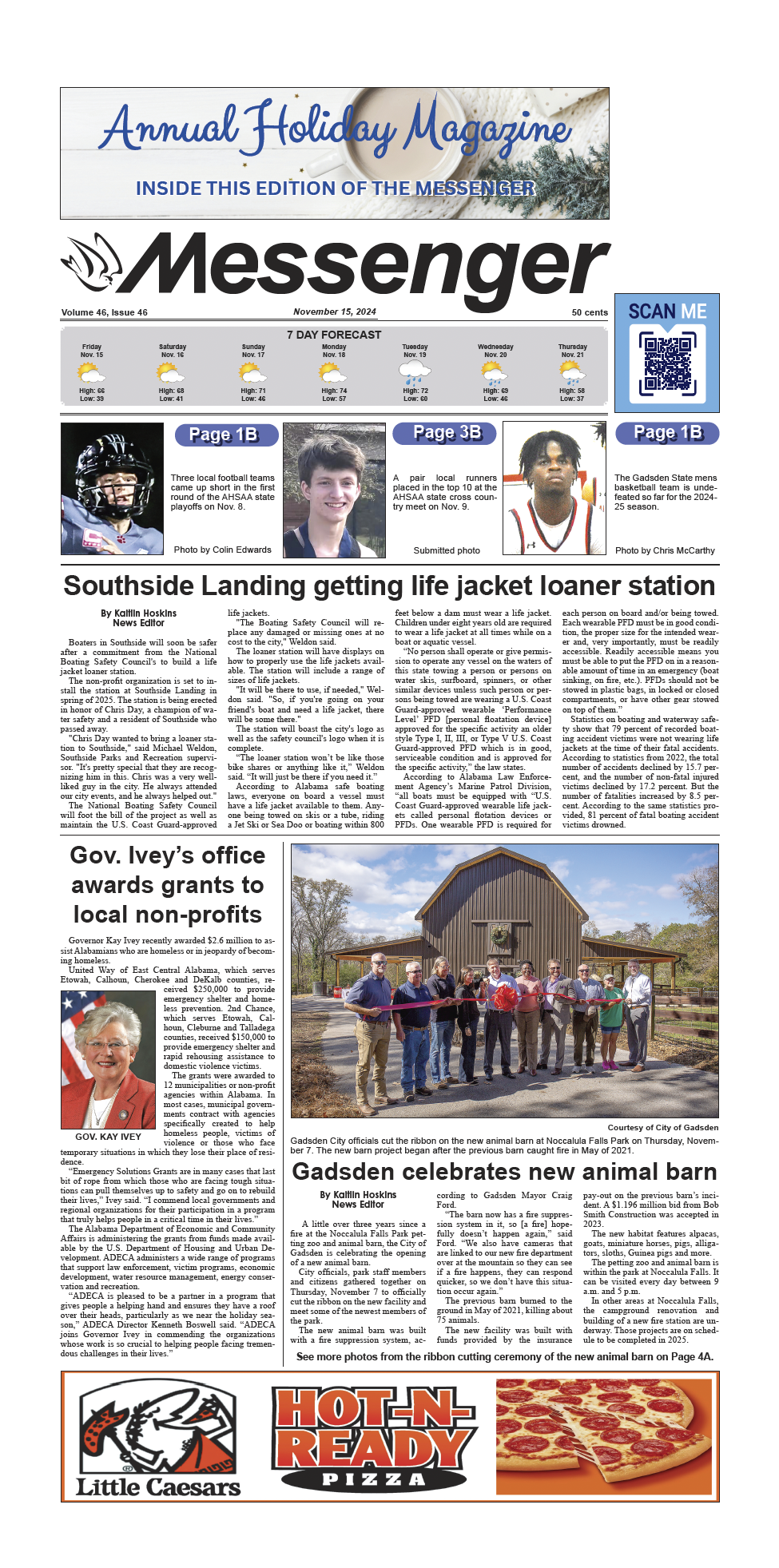By Danny Crownover
Editor’s note: this article was originally published in the August 17, 2012 edition of The Messenger
Incorporated as a town on February 5, 1872, by the 44th General Assembly of the Alabama Legislature. However, the city’s history actually predates its incorporation as a town.
The City of Attalla occupies the site of an Indian village that had considerable importance during the Creek War of 1813-14. The village was located along the banks of Big Wills Creek and Line Creek (also known as Radliff Creek) to the point where it flowed into Big Wills Creek, which created the southern boundary. It followed Big Wills Creek to the point where it emptied into the Coosa River.
When Andrew Jackson’s army came to the foot of Raccoon Mountain, now known as Sand Mountain, Jackson found a village from which he sought food supplies.
The Brown, Ratliff and Fields Indian families who supplied a company of Jackson’s army occupied this village. This company was noted for helping end the hostility of the Creek Indians against the white settlers who had moved into the area. The ruins of this vicinity are known as “Tsu-sanya-sah,” or “Ruins-of-a-Great-City.”
Jackson established a supply camp, known as Camp Wills, on the banks of Big Wills Creek, where Rhea’s Lake was later located. The present-day Water Works of the City of Attalla is now located at the site. This supply camp was located between Fort Strother, Jackson’s main base on the Coosa River, and Ditto Landing, on the Tennessee River.
The first post office located in the area was Bennettsville, which was named for Vincent Bennett, a former sheriff of Spartanburg County, South Carolina. Be-nnett came to the area before Alabama became a state and operated a general store in which the post office was located.
In 1870, Stanton, Cravath and Stanton of West Newton, Mass., built a railroad from Chattanooga, Tenn., to Meridian, Miss. The line was known as the Wills Valley Railroad and ran along the base of the historic Lookout Mountain.
A boom settlement consisting of rude shacks and tents soon was in existence, followed by a few stores, a blacksmith shop and a few dwelling houses. Fifteen hundred Chinese laborers were used in the construction of the base for the railroad. A tavern soon acquired a wide reputation for its hospitality and fine cuisine, and a crude bowling alley was located in a pine thicket.
At the point where the Selma, Rome and Dalton Railroad was projected to cross the Wills Valley Railroad, J.C. Stanton built a large hotel. The site became known as The Junction. In 1871, Commodore Ebenezer Farrand, a man who made a name for himself in the Confederate Navy during the Civil War, was brought to the area to manage the hotel.
During the Civil War Centennial, the remains of Commodore Farrand were removed from the Old Attalla Cemetery on Sixth Avenue and re-interred in the Oak Hill Cemetery.
W.C. Hammond, the son of Richmond Hammond, one of St. Clair County’s earliest residents, owned a plantation near the site of the hotel. The builders of the railroad obtained land from Hammond, and their survey laid out a plan for the town.
qThe first name chosen for the new town was Newton, named for the hometown of J.C. Stanton in Massachusetts. When an application was filed for the establishment of a post office, it was rejected, since there was already a Newton, Alabama. The group was asked to submit another name, and the name “Attalla” was selected.
There has been some difference of opinion in regard to how the name was selected and what was the meaning of the word. One book on place names in Alabama states: “Attalla, a city in Etowah County – The first settlement here was called Atale, which is a corruption of the Cherokee ‘Otali,’ or ‘Mountain.’”
However, the name more generally accepted is supposed to have been selected by early French settlers, from the name of the heroine Atala, a prose epic written by Chateaubriand in 1800. He described the lives of Indians and was very popular in the United States. Van Wyck Brooks, author of “The World of Washington Irving,” said that the popularity of the Frenchman’s novel led to at least two places being given similar names – Attalla, Alabama, and Attala County, Mississippi.
The late Ed Hamner, a local historian and lawyer, was a student of Indians of this area. He claims that Attalla meant “my home.”
With the completion of the railroad and the town surveyed into lots by 1872, a population of 300 people was reported. A Presbyterian church was already in existence. A Methodist church was located on West Fifth Avenue, but a new building was later erected at the corner of Fourth Street and Sixth Avenue.
The city’s first school was the Hudson School, taught by Reverend T.E. Hudson. The next school was the Clements School, taught by Reverend M.K. Clements. The school was located at the corner of Fifth Street and Fourth Avenue. It was here that the Baptist church was organized in 1887 as a mission of the new Etowah Baptist Association.
The city’s first newspaper was The Union Republic, which began printing on May 20, 1870, by P.J. Smith. The paper was followed by The Pick and Shovel. The Crescent, The New Age, and The Attalla Herald was published by G. Thomas Moore and later J.W. Mills. The last Attalla newspaper was The Etowah News Journal.
John S. Moragne, one of the early residents of Gadsden, moved to Attalla and began the operation of the area’s first iron ore mine. In 1881, The Alabama State Gazetteer and Business Directory listed: “Attalla, Etowah County, Alabama Great Southern Railroad, seven miles from Gadsden, the county seat; connected by a branch road of which Gadsden is the terminus. Population is 300. The principal industry is iron mining. There are two mines here, one with output of 50 tons per day, the other 100 tons. Coal is also abundant, one saw and grist mills, telegraph, express office, several schools and churches.”
Other Attalla business establishments included H.C. Burnett Saloon, Christopher and Stewart Cotton Gin and General Merchandise, J.W. Duncan General Merchandise, J.C. Guthrie Shoemaker, R.D. Hick Saloon, M.D. McDonald Ge-neral Merchandise and Saw Mill, Ramey and Hill Saloon, R.J. Smith Hotel and A.G. Wear General Merchandise.
In 1903, Attalla became the first town in the United States to be lighted with hydroelectric power. Captain W.E. Lay, whose father was a riverboat captain who transported merchandise from Rome, Ga., to Greensport, Ala., was watching the water rushing through the flume and water wheel at Lock 2. It was at that location that Lay conceived the idea of making water turn a dynamo. After traveling throughout the United States and Europe, Lay returned home and obtained the old Wesson Mill on Big Wills Creek.
After rebuilding the dam and obtaining leases from landowners in Big Wills Valley to flood part of their land, Lay installed a 756-horsepower capacity turbine driven generator.
Lay’s agreement with the Town of Attalla would furnish free power to the town in exchange for a franchise to install electric power in the homes and businesses in the town. On Dec. 6, 1906, the Alabama Power Company was incorporated from this endeavor.
By 1912, Lay passed control of the power company to James Mitchell, and the power plant was moved from Big Wills Creek to the Coosa River.
“I now commit to you the good name and destiny of the Alabama Power Company,” said Lay at the time. “May it be developed for the service of Alabama.”
From this agreement, the City of Attalla still receives free power for lights in all buildings belonging to the city, such as public schools and city hall.




